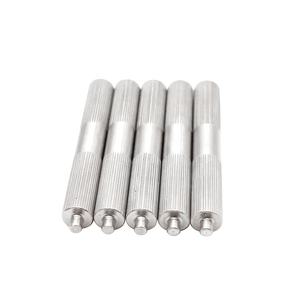Determining the outboard shaft size is an important job for mechanical engineers involved in marine propulsion system layout, installment, or maintenance. The correct shaft length makes sure optimal engine performance, fuel efficiency, and functional safety. A poorly sized shaft can cause cavitation, excessive drag, bad handling, or even mechanical failing. This article outlines the methodology to properly determine the ideal outboard motor shaft size for an offered vessel.
(how to measure outboard shaft length)
The outboard shaft size is defined as the upright distance from the top of the transom placing brace to the centerline of the prop shaft. Standard shaft sizes are generally categorized as short (15 inches), long (20 inches), or extra-long (25 inches), though some suppliers use variations. The primary objective is to match the shaft size to the watercraft’s transom height– the vertical range from the keel (lowest point of the hull) to the top of the transom.
** Action 1: Step Transom Elevation **.
Begin by positioning the watercraft on a degree surface area or in the water with its normal lots (fuel, equipment, passengers). Using an inflexible measuring tape, procedure from the keel’s underside to the top of the transom where the electric motor will be placed. Tape this worth as the transom height. For multi-hull or stepped-transom boats, get in touch with the maker’s guidelines to recognize the proper dimension points.
** Step 2: Determine Required Shaft Length **.
The shaft length must represent the transom elevation. For instance, a transom height of 20 inches necessitates a lengthy shaft (20 inches). Resistances within ± 1 inch are generally appropriate, however deviations yet variety risk efficiency concerns. If the transom elevation falls between common sizes, round up to the next available size to guarantee the propeller stays immersed throughout operation.
** Action 3: Validate Anti-Ventilation Plate Setting **.
The anti-ventilation plate (AVP), located just over the propeller, must sit about 1– 2 inches below the waterline when the watercraft is stationary. This avoids air suction (air flow) and ensures regular thrust. To verify positioning, temporarily install the electric motor vertically and observe the AVP’s placement about the waterline. Change the shaft size if the plate is noticeably above or hidden as well deep.
** Devices and Finest Practices **.
Utilize a high-quality measuring tape and a level to eliminate mistakes from unequal surface areas. For accuracy, repeat dimensions at numerous factors along the transom, specifically if the hull has curvature or reinforcement. Constantly cross-reference with the outboard electric motor producer’s specifications, as style variants (e.g., engine tilt angle, bracket geometry) can influence reliable shaft size.
** Usual Errors to Avoid **.
– ** Disregarding Load Problems: ** A greatly laden boat sits lower in the water, possibly submerging a small shaft. Action under reasonable tons scenarios.
– ** Misidentifying the Keel: ** On boats with skegs or integrated tails, make certain the measurement begins with the hull’s true floor.
– ** Overlooking Engine Trim: ** The shaft size need might change if the electric motor is cut significantly upward or downward throughout operation.
** Repercussions of Incorrect Shaft Length **.
A shaft that is also short reveals the prop to air consumption, causing cavitation, loss of drive, and getting too hot. On the other hand, an exceedingly lengthy shaft enhances hydrodynamic drag, minimizing rate and gas efficiency. It also elevates the risk of grounding in superficial waters. Both circumstances increase endure engine components and compromise safety in harsh seas.
** Verdict **.
(how to measure outboard shaft length)
Accurate dimension of outboard shaft length is non-negotiable for guaranteeing marine propulsion systems run as meant. Designers must carefully use the outlined steps, make up real-world variables, and adhere to producer requirements. When doubtful, speak with technical datasheets or conduct hydrodynamic simulations to confirm the choice. An appropriately sized shaft improves performance, expands engine life, and upholds safety requirements– a testament to precise mechanical design.


